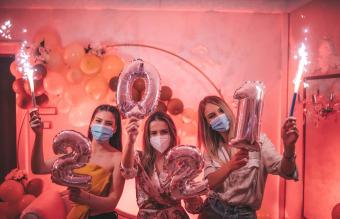
Carbon monoxide poisoning symptoms can be mistaken for other medical problems if the exposure to this colorless, odorless gas is at low levels. At higher levels of exposure, the symptoms and the health consequences become more severe.
Carbon Monoxide Poisoning Symptoms at Low Levels of Exposure
The following are symptoms of carbon monoxide poisoning at low levels of exposure:
- Headaches
- Nausea or Vomiting
- Shortness of Breath
- Fatigue
- Dizziness
As you can see, these symptoms could be mistaken for food poisoning, a stomach virus, or another health concern. You may become suspicious that these symptoms are related to carbon monoxide if you feel better after you leave your home and get some fresh air, only to start to feel ill again after returning home. Exposure to carbon monoxide can be fatal at higher levels.
Chronic Carbon Monoxide Poisoning
If a person is exposed to low levels of carbon monoxide over a long period of time, they may experience symptoms for a long period of time - even after the exposure to carbon monoxide has ended. This exposure may result in difficulties in the following areas:
Memory and Attention: The person may have trouble recalling recent events, concentrating, or finding the right words to express themselves.
Physical: Headaches, nausea, vomiting, and chronic fatigue are symptoms of chronic carbon monoxide poisoning. In addition, the individual may complain of muscle and joint pain, tingling, and dizziness.
Vision and Balance: Blurred vision, difficulty keeping one's balance, and a buzzing in the ears may also be caused by exposure to carbon monoxide.
Personality Changes: When a person feels irritable or anxious, they may not necessarily connect it to carbon monoxide poisoning, but these symptoms have been linked to long-term exposure to the gas.
How to Prevent Carbon Monoxide Poisoning
Here are some suggestions to prevent carbon monoxide poisoning in your home:
- Have your furnace inspected once a year.
- Buy a carbon monoxide detector and install it in your home. Follow the manufacturer's instructions and test the unit on a regular basis to make sure it is working properly.
- If you have a chimney, make sure that it is cleaned and inspected once a year. Twigs or bird nests can block off the flue and cause carbon monoxide to build up in your home.
If You Suspect Carbon Monoxide Poisoning or Your Detector Goes Off
In a situation where you suspect that you have been exposed to carbon monoxide or the detector is going off, you need to leave the house immediately. If you can't leave the house, then open windows and doors to let some fresh air into the dwelling. Call 9-1-1 or your local Emergency number and ask that the Fire Department come to your home to check the carbon monoxide levels. Don't go back inside until you are told it is safe to do so. You will need to go to hospital Emergency Room for treatment.
In the case of a carbon monoxide detector going off, it's possible that the unit is malfunctioning, since they do need to be replaced every few years. Please don't assume that this the case until you get the situation investigated thoroughly.
Treatment for Carbon Monoxide Poisoning
In cases of suspected carbon monoxide poisoning, a blood test will be ordered to measure carbon monoxide levels in the body. Once poisoning has been confirmed, the person is given oxygen through a mask. The blood test is repeated periodically until the carbon monoxide levels have dropped.
One of the best things you can do to protect yourself and your family is to install a carbon monoxide detector in your home. Be alert for the symptoms of carbon monoxide poisoning and seek medical attention promptly if you suspect you have been exposed.
.







